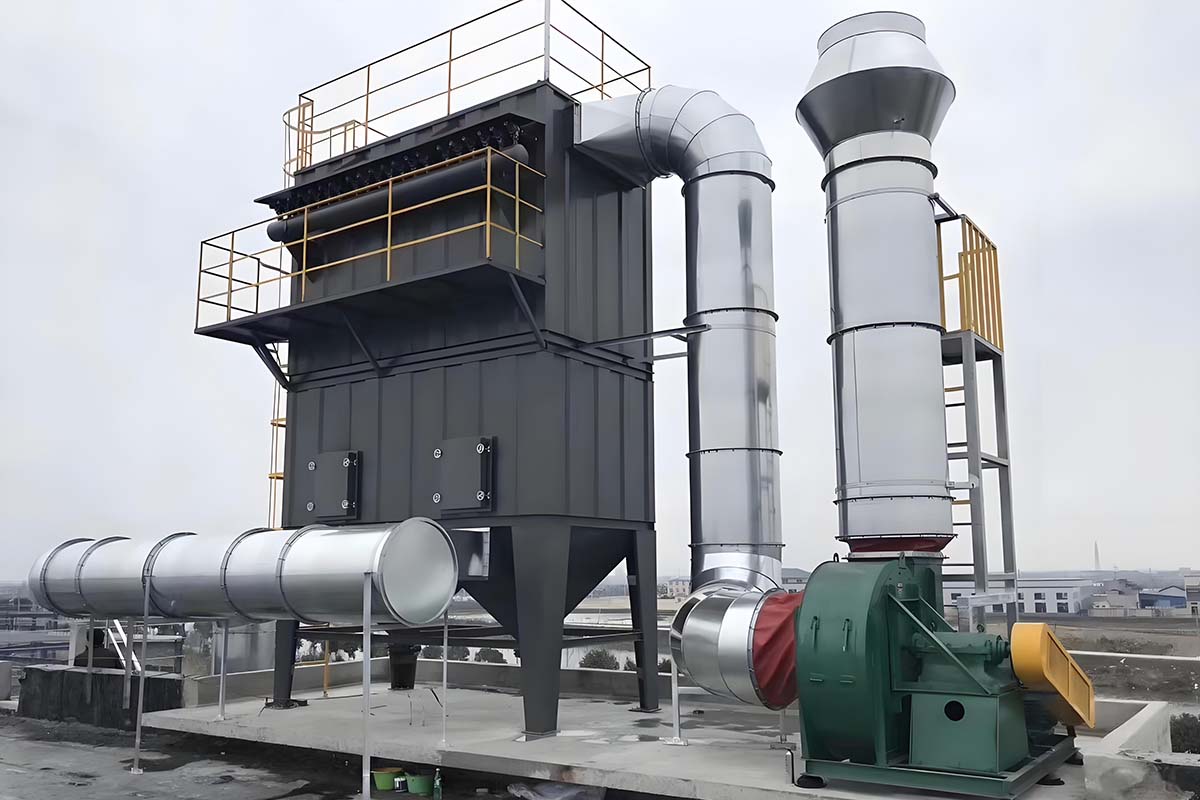
Dust Explosion Prevention: A Focus on Explosion-Proof Dust Collectors
Industrial processes are the main source of dust. When dust reaches certain concentration in a confined space and meets an ignition source, it can explode and cause serious damage.
We must take proper safety measures to prevent this. These measures improve safety in risky areas and can ultimately eliminate dust explosions.
PART 01: Dust Explosions
How Dust Explosions Happen
Combustible dust burns fast in air. This releases much energy and produces gas. The burning speed relates to how much dust surface touches the air. More surface area means faster burning and higher explosion risk.
Common Explosive Dust Types
- Metal powders: aluminum, zinc, magnesium, iron
- Processing powders: silicon iron, aluminum grinding dust
- Plastic powders of various kinds
- Chemical intermediates for drug making
- Food products: wheat flour, milk powder, sugar, tea dust
- Others: tobacco powder, dyes, plant fiber dust
Conditions for Dust Explosion
Five conditions must all be present for a dust explosion:
The dust must be combustible
There must be enough oxygen
Dust must be mixed well with air
Dust concentration must reach explosive range
An ignition source with sufficient energy must exist
Space limits, air pressure, and temperature also affect the explosion.
PART 02: Prevention Measures
Eliminate Ignition Sources
Common ignition sources include:
- Electrical sparks
- Hot metal surfaces
- Static electricity sparks
- Welding sparks
- Friction or impact sparks
- Open flames
Key actions:
Use dust equipment correctly to avoid sparking
Take anti-static measures
Control all hot work activities
Control Combustible Dust
Key actions:
Keep equipment sealed against leaks
Use ventilation and dust collectors
Clean regularly to avoid buildup
Use wet methods when possible
Control Combustible Dust
Add inert gases like nitrogen or carbon dioxide to reduce oxygen levels. Keep oxygen below safe limits. Monitor oxygen content constantly.
Increase Air Humidity
More humidity makes dust particles heavier so they settle. Wet dust is harder to ignite. Humidity also reduces static electricity.
PART 03: Explosion-Proof Dust Collectors
Design Purpose
Stop explosions early before they grow. If explosion occurs, relief devices should safely handle it.
Pressure Relief Devices
Common types:
- Explosion safety valves
- Bursting discs
- Weighted safety valves
- Spring-loaded vents
Add platforms and rails below relief devices. Keep them locked and marked when not in use.
Operating Parameters
- Valve plates: about 5mm thick
- Air speed in pipes should prevent dust settling:
- Wood dust: minimum 20 m/s
- Metal dust: minimum 23 m/s
- Hood speeds vary by material and process
Inerting and Monitoring
When using inert gas, control oxygen carefully. Keep dust flow below 50% of explosion limit. Add monitors that alarm if problems occur.
Automation and Alarms
Automatic controls and linked alarms are essential. They detect dangers, send alerts, and trigger safety systems.
PART 04: Flameless Venting
Choosing Venting Method
Two main options for pressure relief:
- Bursting discs: release flames (use outdoors)
- Flameless vents: trap flames with mesh, release only smoke (use indoors)
Key Design Features
- Dust slides: make slopes steeper than 70°
- Add guide plates to prevent dust buildup
- Use anti-static filter bags to control static electricity


